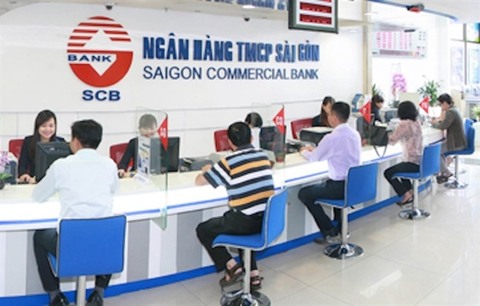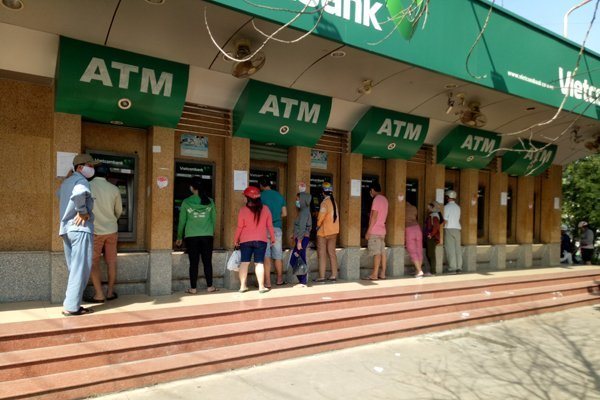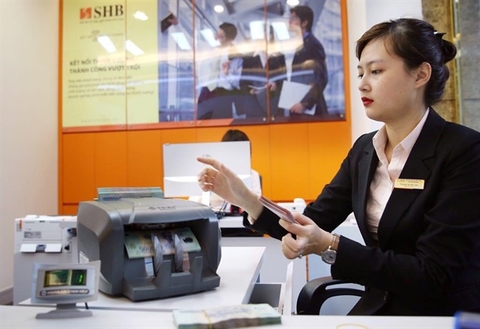A predicted scenario
A predicted scenario
For the first time in years, the Bank for Investment and Development of Vietnam (BIDV) has fallen out of the list of the top five profitable banks in the face of the strong growth of joint-stock commercial banks. However, in view of developments over the past three years, the fall seems to be a predicted scenario.
With a consolidated pre-tax profit of VND7,028 billion in the first nine months of this year, a year-on-year fall of 3.1%, BIDV is the first bank to record a profit drop among banks which have published financial reports in Q3. The bank has also fallen out of the list of the top five profitable banks, being placed below VPBank, MBBank, Techcombank, Agribank and Vietcombank.
While Vietcombank’s top position is something foreseeable, the sudden appearance of Agribank at the second position has played a part in pushing BIDV out of the top five. With the first nine-month profit announced at VND9,700 billion, 1.3 times higher than the entire 2018 profit of VND7,525 billion and nearly double the 2017 profit of VND5,018 billion, Agribank, which rarely publishes periodical reports, seems to be intent to show that its restructuring process to prepare for equitization is on the right path.
Besides Agribank, the market also pays attention to the emergence of joint-stock commercial banks, with Techcombank, MBBank and VPBank as representatives. Able to gain a pretax-profit of VND8,860 billion in the first nine months, rising 14% from the year-earlier period, especially the Q3 year-on-year profit surge of 24% to VND3,198 billion, Techcombank has secured the third position in the top five.
MBBank has won the fourth position with a consolidated pre-tax profit of VND7,616 billion, surging nearly 27% year-on-year. With efforts to reduce bad debts, VPBank has gained a profit of VND7,199 billion, with the Q3 profit soaring 63% year-on-year to VND2,856 billion, has followed next.
The market has also witnessed a breakthrough of joint-stock commercial banks with multi-thousand-billion dong profits in the first nine months, such as VIB with a profit of VND2,915 billion, up 70% year-on-year; Sacombank with VND2,491 billion, up 89%; TPBank with VND2,404 billion, up 50%; and LienVietPostBank with VND1,636 billion, up 61%.
The overtaking of joint stock commercial banks to replace big State-owned commercial banks in the top five is a predicted scenario. In 2017, Vietcombank, VietinBank and BIDV were the top three profitable banks, followed by VPBank and Techcombank, and State-owned Agribank was in the sixth position. In 2018, Vietcombank remained on top, but Techcombank and VPBank won the second and third positions respectively, pushing BIDV to the fourth. MBBank and Agribank came next while VietinBank fell to the seventh position, with a profit just VND17 billion higher than that of the next bank ACB.
Bad debt problem
It must be acknowledged that BIDV’s profit fall is greatly affected by the bad debt problem. A glance at its financial report shows that BIDV is the leader in gross profit against credit risk provisions with VND23,500 billion in 2017, nearly VND28,400 billion in 2018 and more than VND23,500 billion in the first nine months of this year. These figures are far higher than those of the follower Vietcombank, with VND17,500 billion, nearly VND25,700 billion and VND22,400 billion, respectively.
The comparison must be made with the top Vietcombank to show the tremendous profit generation capacity of BIDV, albeit with a slower pace recently. Nevertheless, the bad debt problem, shown through the credit risk provisions, has eroded most of BIDV’s profit. The provisions for 2017 is over VND14,800 billion, for 2018 nearly VND18,900 billion and for the first nine months of 2019 more than VND16,500 billion, meaning that the growth of credit risk provisions is higher than that of profit generation.
The absolute bad debt at BIDV has also increased fast, rising more than 34% to over VND18,800 billion in 2018 and 19.3% to VND22,400 billion in the first nine months of 2019. Notably, debts in category five (debt classified as potentially irrecoverable) have increased more than 70% to nearly VND12,200 billion, accounting for over 54% of the total bad debt. Furthermore, according to its semi-annual report in 2019, the bank has more than VND12,800 billion worth of bad debts in the form of special bonds of the Vietnam Asset Management Company (VAMC). Though the figure is lower than VND19,300 billion of 2017 and VND14,100 billion of 2018, BIDV is still among the top five banks which have sold the most bad debts to VMAC. Therefore, the bank has to set aside risk provisions for special bonds periodically, which were valued at VND7,900 billion by end-June.
As the traditional lender for investment projects by State-owned enterprises, many of which have performed poorly or suffered huge loses, BIDV has been facing ballooning bad debts. The bank is also one of the four banks which have offered the most credits to build-operate-transfer (BOT) and build-transfer (BT) investment projects in previous years. According to the Governor of State Bank of Vietnam Nguyen Minh Hung, the bad debts of those projects may amount to VND53,000 billion.
BIDV also has to handle sub-standard loans for private enterprises during the time of its former chairman Tran Bac Ha, which were offered to big struggling clients like Hoang Anh Gia Lai Group and Thuan Thao Joint-stock Corporation, 12 companies of Pham Cong Danh, former chairman of the Vietnam Construction Bank, and Ha’s “backyard” companies.
Stagnant capitalization
BIDV has once been the second largest capitalized bank in Vietnam after VietinBank. However, over the past four years, the bank’s charter capital has stood at VND34,187 billion, the same as the figure at end-2015. Difficulties in raising capital have made it impossible for the two banks to expand business and lending as expected, as their capital adequacy ratios (CAR) are always near the statutory 9%.
There was once a fierce debate between BIDV’s board of directors and its largest shareholder, the Ministry of Finance, over retaining profit for capital increase. Recently, the bank suddenly announced paying dividends with cash at 7% for 2017 and 2018 each, a move which is understandable after its successful capital sale to South Korea’s KEB Hana Bank. The distribution of cumulative profits for old shareholders must be completed before receiving new shareholders, especially after the pressure for capital increase has been eased.
In contrast to difficulties in capital raising by State-owned commercial banks, with BIDV and VietinBank as typical representatives (VietinBank even had to reduce outstanding loans in Q4 2018 and Q1 2019 to ensure the CAR - Capital Adequacy Ratio), joint-stock commercial banks have increased capital tremendously since their listing on the stock exchange in 2017, with Techcombank, VPBank and HD Bank as representatives. Statistics show that Techcombank’s charter capital has nearly quadrupled over the past four years to nearly VND35,000 billion, surpassing that of BIDV, and VPBank’s capital has increased 3.1 times in the period.
Regarding business strategy, joint-stock commercial banks are promoting retail banking, personal lending and consumer lending, which generate strong profit growth. Meanwhile, State-owned commercial banks also aim at increasing the ratio of retail banking, but the progress is not as fast as expected, as shown by their NIM (net interest margin) of below 3% on average, way distant from those of banks with a strong advantage in consumer lending.
In the areas of investment, services and fee collection, joint-stock commercial banks also show better growth, with efforts to promote new operations like bancassurance, consulting, underwriting and corporate bond investment. Meanwhile, State-owned commercial banks still focus mainly on government bonds, which have lower risk ratios, to match the low CARs as mentioned above.




















